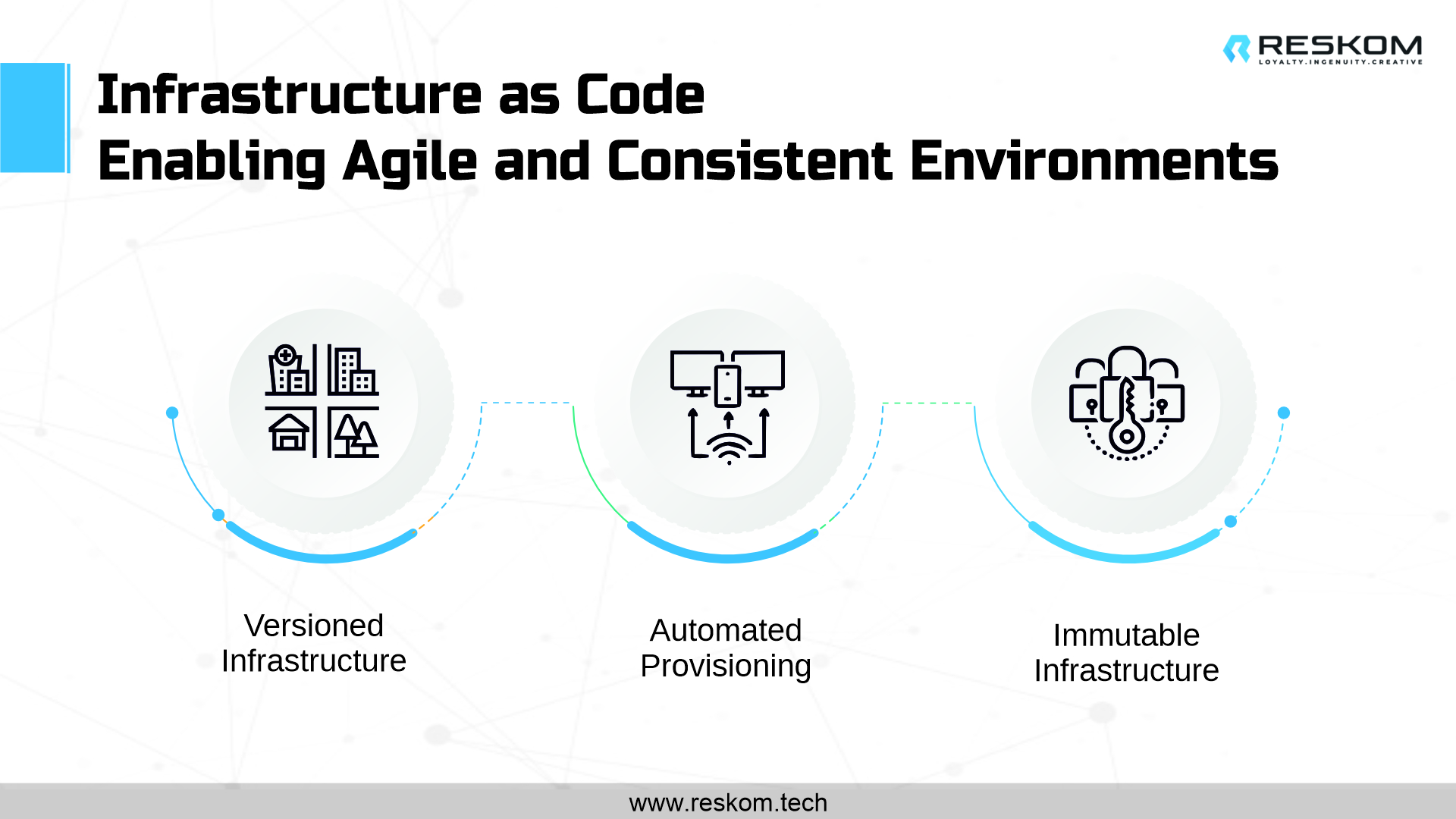The idea of cloud-native development has come up as an industry-shaking tactic in the growing world of software development. This strategy uses the flexibility, scalability, and efficiency of cloud computing to rebuild how we distribute, design, and manage applications. This paradigm shift is driven by four key technologies. In this blog, we’ll go further into these technologies to understand how they support the fundamentals of cloud-native development and encourage the creation of strong, agile, and resilient apps.

Containers: The Building Blocks of Cloud-Native
Containers have completely changed how software is distributed and packaged, and they are now a crucial part of cloud-native development. Containers encapsulate a program and its dependencies, guaranteeing consistent behavior across diverse contexts, in contrast to typical monolithic systems, where numerous components are tightly connected. With the aid of this technology, developers can quickly design portable, lightweight, isolated environments that can be relocated from the development to testing to production phases.
Developers may bundle apps and their dependencies into a single entity known as a container image thanks to Docker, a pioneer in container technology. These images contain all of the code, runtime, libraries, and settings required to execute the program. Automating the deployment, scaling, and administration of containerized open-source container orchestration platforms, advances containerization. Developers can effectively manage intricate microservice designs and guarantee high availability.
Microservices Architecture: Enhancing Scalability and Maintainability
A design pattern known as microservices architecture breaks down programs into smaller, loosely linked services, each of which is in charge of a different business feature. In contrast to monolithic architectures, where the entire application is closely interwoven, this method is used. Cloud-native development systems may become more modular by using a microservices architecture, which enables the independent creation, testing, and deployment of services.
Greater flexibility and quicker release cycles are made possible by the independent development, deployment, and scaling of each microservice. This design improves fault isolation as well; if one microservice fails, the entire program doesn’t go offline. Additionally, microservices make it easier to employ several technologies and programming languages for various services, letting developers pick the most effective tool for the job at hand.
Continuous Integration and Continuous Deployment (CI/CD): Automation for Agility
The cloud-native development environment places a premium on quickness and agility. Building, testing, and deploying code changes are all automated using the methods of continuous integration (CI) and continuous deployment (CD). Code modifications from many developers are automatically included in a common repository as part of CI. By ensuring that code updates are routinely evaluated for problems and conflicts, integration difficulties are decreased.
The deployment of code changes to production or staging environments is automated with CD, allowing for quick and dependable releases. Developers can safely make frequent modest changes now that the CI/CD pipeline is in place since they will be completely tested and delivered with no issues. This automation speeds up time to market, improves the development process, and lowers the possibility of human mistakes.
Serverless Computing: Abstracting Infrastructure Management
Serverless computing is a paradigm where developers focus solely on writing code without having to worry about the underlying infrastructure. In a traditional server-based model, developers need to manage servers, provisioning resources, and scaling based on demand. Serverless computing abstracts this complexity, allowing developers to write functions that are triggered by specific events and executed in ephemeral, stateless containers.
Cloud-native development providers like AWS Lambda, Azure Functions, and Google Cloud Functions offer serverless platforms that automatically handle scaling, load balancing, and resource management. This approach in cloud-native principles not only simplifies development but also optimizes resource utilization and reduces costs, as organizations only pay for the computing resources actually consumed during execution.
Infrastructure as Code: Enabling Agile and Consistent Environments
Infrastructure as Code (IaC) is a pivotal technology in cloud-native development that allows developers to manage and provide the infrastructure through code and automation.
Versioned Infrastructure: With IaC, infrastructure is defined and managed through code, just like application code. This enables version control, making it easier to track changes, collaborate, and revert to previous states if needed.
Automated Provisioning: IaC tools such as Terraform and CloudFormation automate the provisioning and configuration of infrastructure resources. This automation eliminates manual setup, reduces errors, and ensures consistent environments across development, testing, and production stages.
Immutable Infrastructure: IaC promotes the concept of immutable infrastructure, where servers and components are treated as disposable entities. Instead of making changes to running instances, new instances are deployed with the required changes, enhancing consistency and stability.
Service Mesh: Enhancing Communication and Observability
As applications become more complex in a cloud-native environment, managing communication between services and gaining insights into their behavior become crucial. This is where the Service Mesh technology steps in.
Transparent Communication: Service Mesh provides a dedicated infrastructure layer for handling service-to-service communication. It cuts down communication complexities, such as load balancing, retries, and circuit breaking, from individual services.
Observability and Monitoring: Service Mesh solutions like Istio and Linkerd offer advanced observability features, allowing developers to gain insights into how services interact, detect performance bottlenecks, and troubleshoot issues more effectively.
Security and Traffic Control: Service Mesh enhances security by providing features such as mutual TLS authentication between services and fine-grained traffic control. It ensures secure communication within the microservices ecosystem.
Conclusion
For the creation, deployment, and management of contemporary apps, the cloud-native development paradigm depends on a confluence of technologies operating in unison. IaC, Service Mesh, event-driven architecture, and DevSecOps provide the required support for developing fully agile, robust, and secure cloud-native apps, while containers, microservices, CI/CD, and serverless serve as the foundation.
By embracing these cloud-native principles technologies, development teams are given the resources they need to successfully negotiate the intricacies of contemporary software development and to produce products that satisfy the constantly changing needs of consumers and companies. For enterprises aiming to succeed in the digital era, staying educated and skilled with these technologies will be essential as the cloud-native environment continues to change. We hope we have explained What is cloud-native and more information in this blog.
The landscape of modern software development is being reshaped by cloud-native strategies, and at its core are four indispensable technologies. Serverless computing abstracts infrastructure complexity, and combined with Infrastructure as Code (IaC) and Service Mesh solutions, a solid foundation for agile and secure applications is established. These technologies align seamlessly with the innovative ethos of companies like Reskom, empowering them to navigate the evolving software landscape and deliver cutting-edge solutions to their clients.


